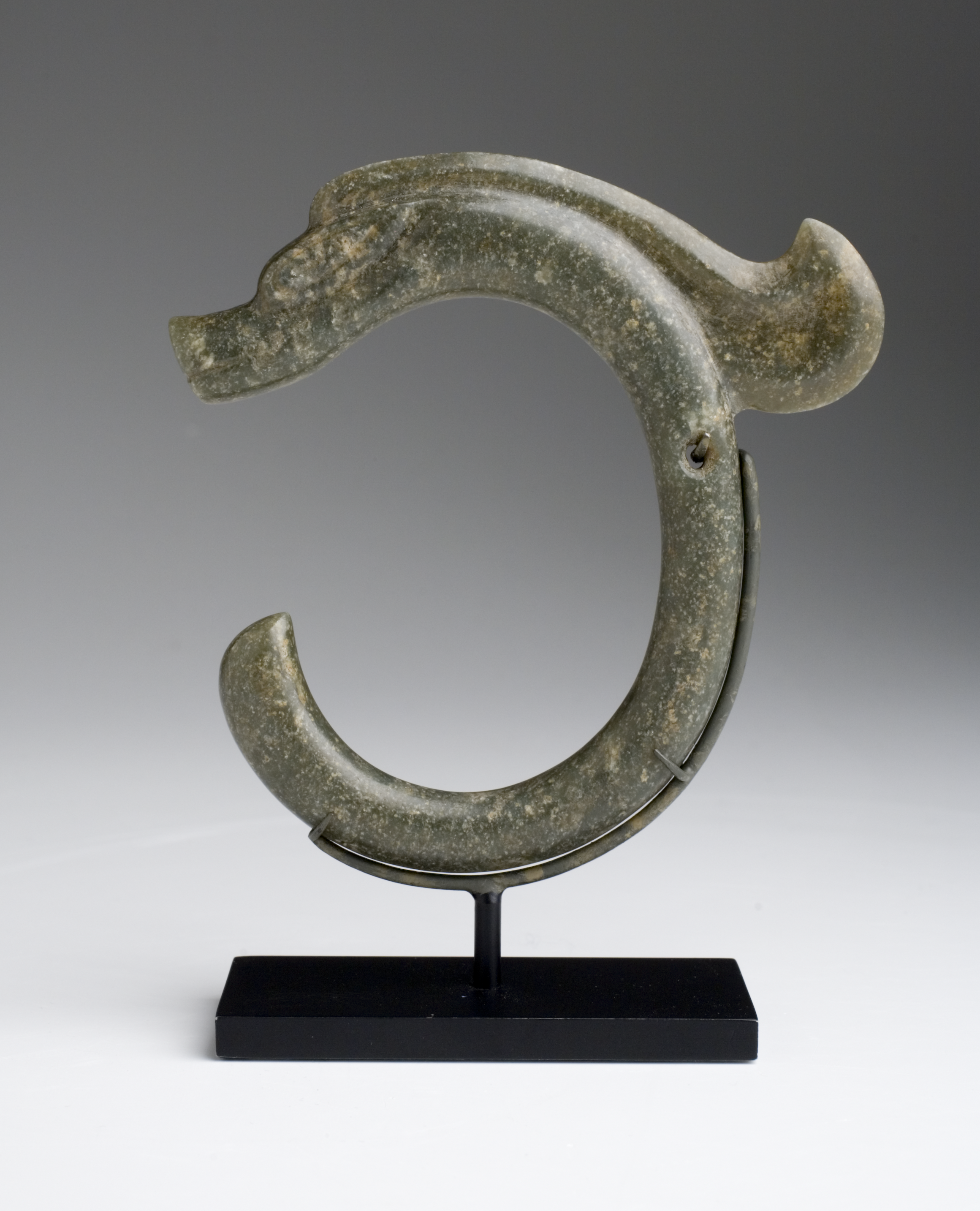Dragon of the Hongshan Culture 4500-3000 BCE
I found this interesting. The Neolithic Hongshan Culture seems to host the oldest (to date) archaeological finds of clearly depicted dragon art in the world. The people that lived there had haplogroups that correspond very strongly with modern day Uralic, Baltic, and certain Turkic speaking populations. But those same haplogroups are found in very low frequencies in China today. Genetics is obviously more complicated than just haplogroups, and some of these populations are quite different from each other genetically, but it's an interesting piece of information nonetheless.
From WorldHistory:
"The earliest known depiction of a dragon is a stylised C-shaped representation carved in jade. Found in eastern Inner Mongolia, it belonged to the Hongshan culture, which thrived between 4500 and 3000 BCE."From Wikipedia:
"A genetic study by Yinqiu Cui et al. from 2013 analyzed the Y-chromosome DNA haplogroup based N subclade; it found that DNA samples from 63% of the combined samples from various Hongshan archaeological sites belonged to the subclade N1 (xN1a, N1c) of the paternal haplogroup N-M231 and calculated N to have been the predominant haplogroup in the region in the Neolithic period at 89%, with its share gradually declining over time. Today, this haplogroup is found in northern Han, Mongols, Manchu, Oroqen, Xibe and Hezhe at low frequencies".
From NationalLibraryOfMedicine:
"The sequence of cultures include the Hongshan culture (6500–5000 BP), Xiaoheyan culture (5000–4200 BP), Lower Xiajiadian culture (4200–3600 BP), and Upper Xiajiadian culture (3000–2700 BP) (Figure 1). The Hongshan culture is one of the most advanced Neolithic cultures in East Asia, with social stratification, distinctive painted pottery and elaborate jade ornaments. Archaeological investigations suggest that hunting- gathering was the main mode of subsistence, but they also indicate early use of cultigens in the Hongshan Culture. The Xiaoheyan culture adopted the basic features of the Hongshan culture, but had a simpler social organization. It was followed by the Lower Xiajiadian culture, which was marked by a gradual shift to agriculture and the establishment of permanent settlements with relatively high population densities, while retaining some of the hallmarks of the Hongshan culture. It was replaced abruptly by a radically different culture, the Upper Xiajiadian, which was influenced by the Bronze Age cultures of the Northern China steppe.
The most ancient populations of the West Liao River valley exhibited a high frequency (71%) of haplogroup N1-M231. Because of the short amplicons needed for the ancient samples, it was not possible to type the diagnostic site P43 of sub-haplogroup N1b, so samples that yielded negative M128 and TAT mutations were defined as N1 (xN1A, N1c). Besides being the only haplogroup in the Halahaigou site, N1 (x N1a, N1c) was also predominant in the Niuheliang and Dadianzi sites. In the Dashanqian site, there were two subtypes of N1-M231: N1 (xN1a, N1c) and N1c-TAT. One of the nine Dashaqian samples was N1 (xN1a, N1c), and three were N1c (Table 1). N1 is particularly widespread in northern Eurasia, from the Far East to Eastern Europe. Its subtype, N1c, is found at low frequency but has high STR variability in northern China, suggesting that this region was N1c’s centre of expansion.
A single instance of O3a (xO3a3) was observed in the Neolithic Hongshan and Xiaoheyan sites, although this haplogroup was observed in just under half of the Bronze Age individuals. The Upper Xiajiadian individuals of the late Bronze Age had different subtypes of O3a-M324, O3a3c-M117. O3a-M324 is found today in most East Asian populations, and its subtype O3a3c-M117 occurs at the highest frequency in modern Sino-Tibetan populations.
The West Liao River valley was a cradle of Chinese civilization, together with the valleys of the Yellow River and Yangtze River, and there is considerable interest among scholars in the origin and expansions of the ancestors of the present-day inhabitants. Extensive analyses of extant populations have revealed that the most common Y chromosome haplogroup today is O-M175 (58.8%, n=176), followed by C3-M217(23.8%), N-M231(8.5%), and several relatively rare haplogroups, namely D-M174, Q1a1-M120, and R-M207. Our data reveal that the main paternal lineage in the prehistoric populations was N1 (xN1a, N1c), present in about 63% of our combined sample of all cultural complexes. It was the predominant haplogroup in the Neolithic period (89%), and declined gradually over time (Table 1). Today it is only found at low frequency in northeast Asia (Table 2). There appears to be significant genetic differences between ancient and extant populations of the West Liao River valley (P<0.001)."
Source:









Comments
Post a Comment